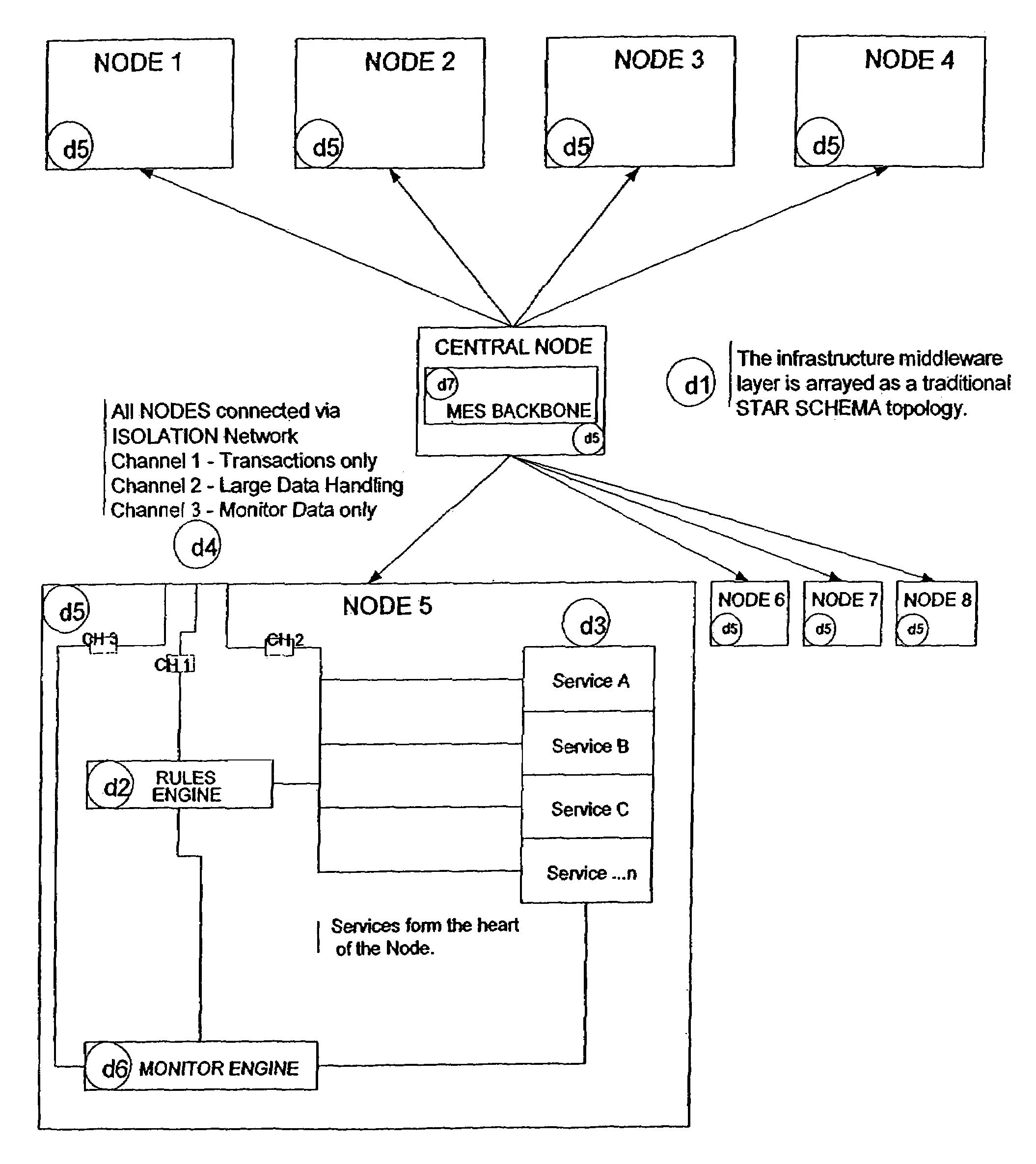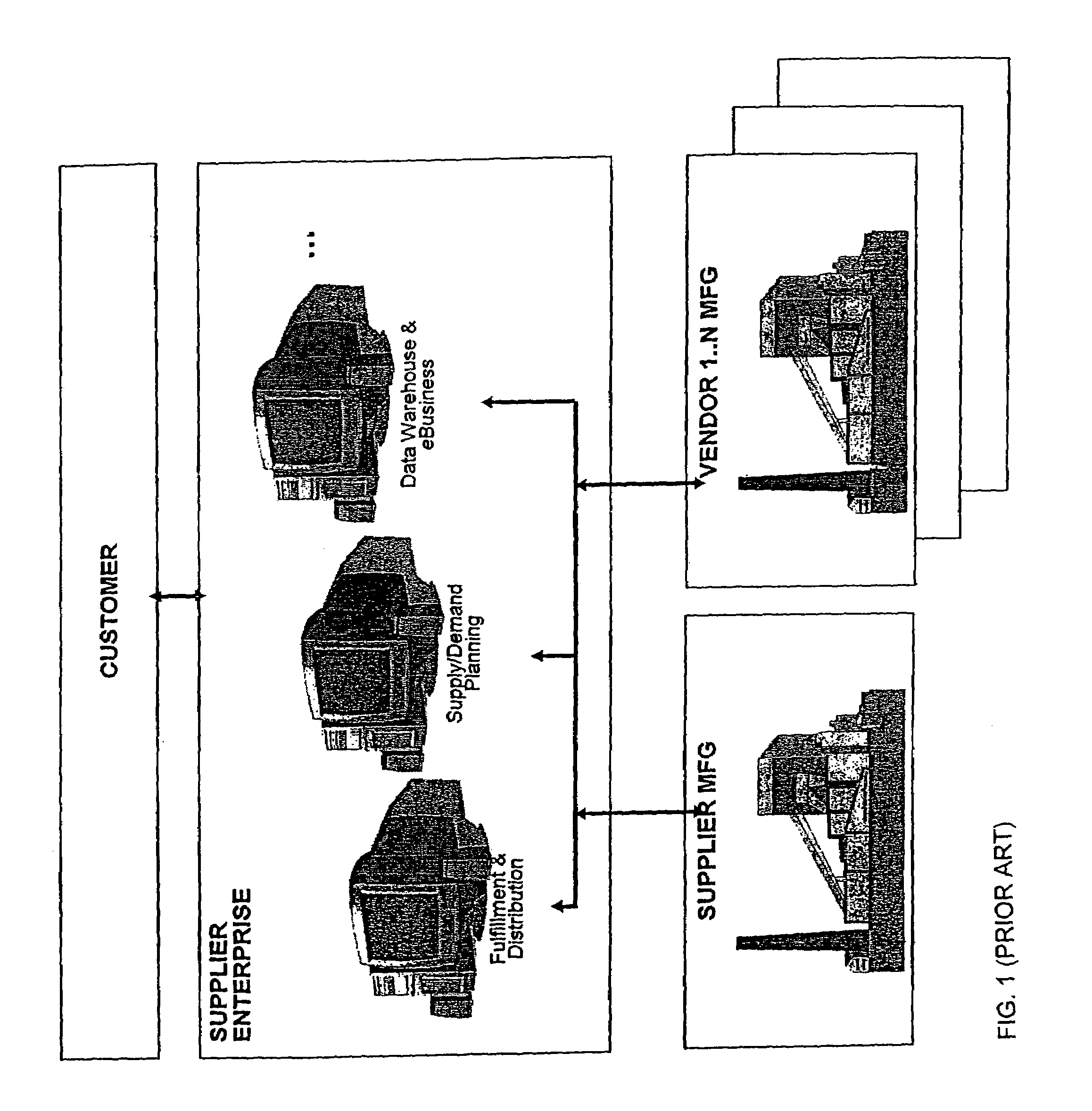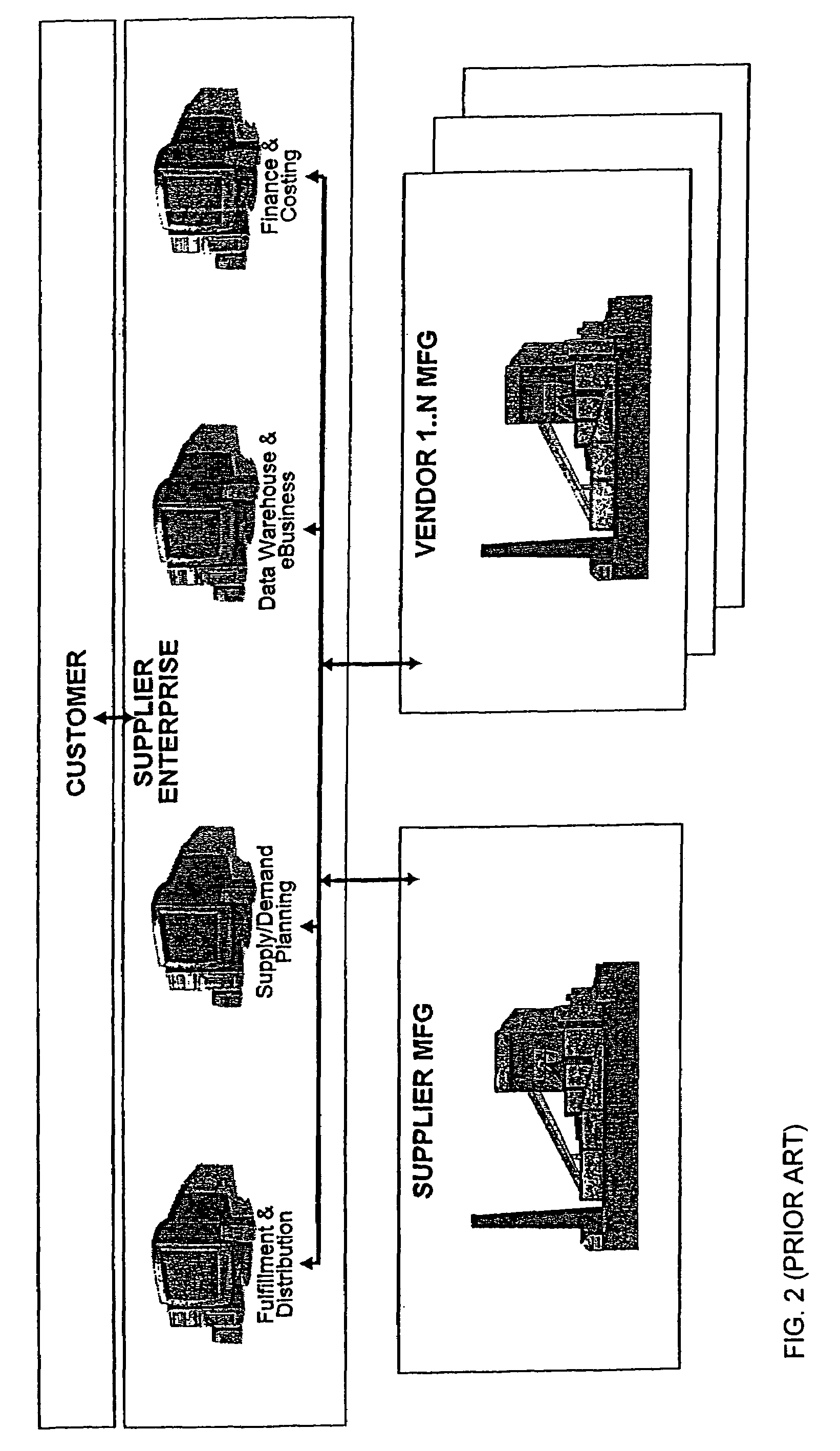Enterprise factory control method and system
a factory control and enterprise technology, applied in the field of manufacturing execution systems, can solve the problems of consuming a great deal of information, preventing any supplier to the customer from achieving an overall view of manufacturing locations and processes, and unable to meet the needs of customers, etc., to achieve the effect of rapid integration of the necessary manufacturing assets
- Summary
- Abstract
- Description
- Claims
- Application Information
AI Technical Summary
Benefits of technology
Problems solved by technology
Method used
Image
Examples
example route selection
[0096]For example, referring to FIG. 8 a fabless semiconductor Customer ABC requests a semiconductor Service Provider XYZ to produce custom wafers with solder bumps and wafer test. These represent the portions of the manufacturing process from the semiconductor service provider that the customer could not manage itself. At the end of wafer test, Service Provider sells the tested wafers, together with the test data and the logistics data, to Customer ABC for their management.
example mes selection
[0097]Referring to FIG. 9, the Service Provider XYZ selects a manufacturing execution system that can manage the appropriate products and processes selected by the customer. In this case, the service provider selects AssemblyView, a software product offered by International Business Machines Corporation (“IBM”), (also known as AsmView) as an electronics manufacturing execution system that can manage both wafers and die therefore covering fabrication to wafer test portion of the process as requested by the customer. Service Provider sets up a centralized server using AsmView on an AIX system, an operating system also offered by IBM, to manage the customer selected processes.
[0098]Manufacturing Stage creation —The supplier examines each manufacturing process operation and determines which are required to be executed at the same site. Some considerations include efficiency, contamination, skill, technology, form / fit / function matching and timeliness to the next operation. The resulting ...
example manufacturing
[0108]Referring to FIG. 15, at the beginning of the wafer process, the Where Next function, described below, selects all of the process sites where the wafer lot will be processed. This information is organized as a Manufacturing Plan stored as a lot record in the AsmView Backbone. The Backbone sends a Rosetta Net 7B5 Shop floor Papers transaction to Solder Bump manufacturing site. When the lot reaches the end of the Manufacturing Stage, the wafer fab looks up the ‘Ship To’ code and sends the lot to the next site and sends a Rosetta Net 3B2 Advanced Ship Notice to the Backbone. The Backbone then triggers a 3B2 transaction to the next manufacturing site so that they can anticipate the shipment.
PUM
 Login to View More
Login to View More Abstract
Description
Claims
Application Information
 Login to View More
Login to View More - R&D
- Intellectual Property
- Life Sciences
- Materials
- Tech Scout
- Unparalleled Data Quality
- Higher Quality Content
- 60% Fewer Hallucinations
Browse by: Latest US Patents, China's latest patents, Technical Efficacy Thesaurus, Application Domain, Technology Topic, Popular Technical Reports.
© 2025 PatSnap. All rights reserved.Legal|Privacy policy|Modern Slavery Act Transparency Statement|Sitemap|About US| Contact US: help@patsnap.com



